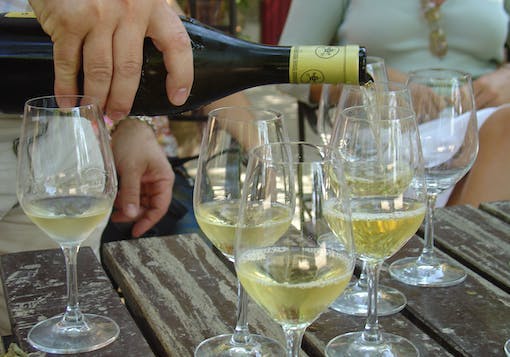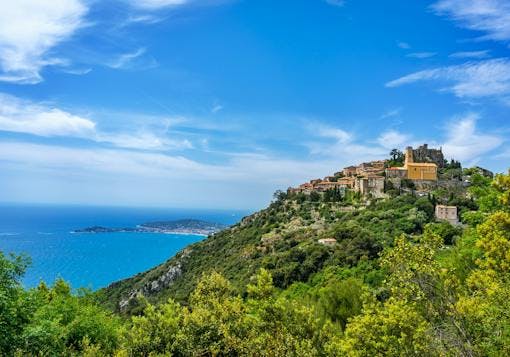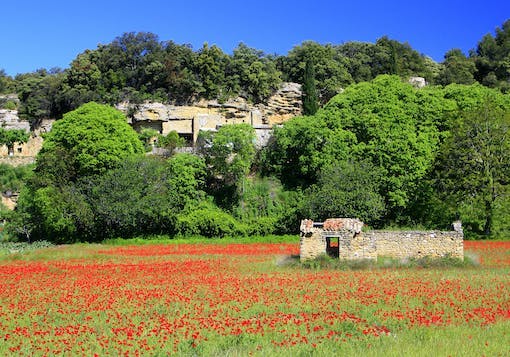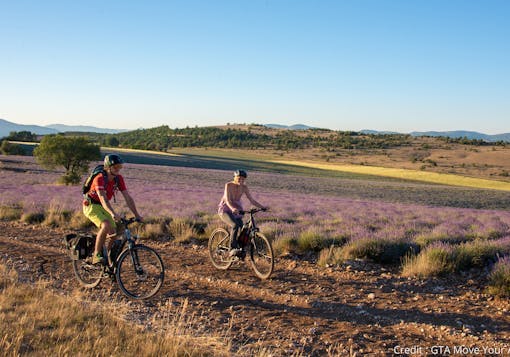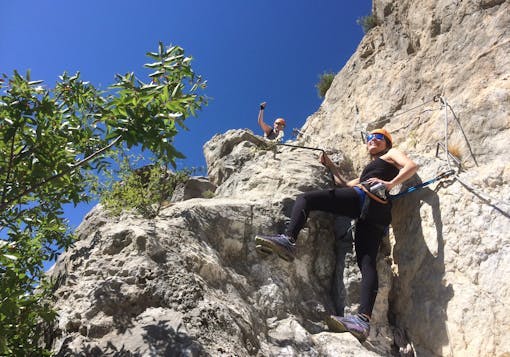Sustainable Travel Guide: France
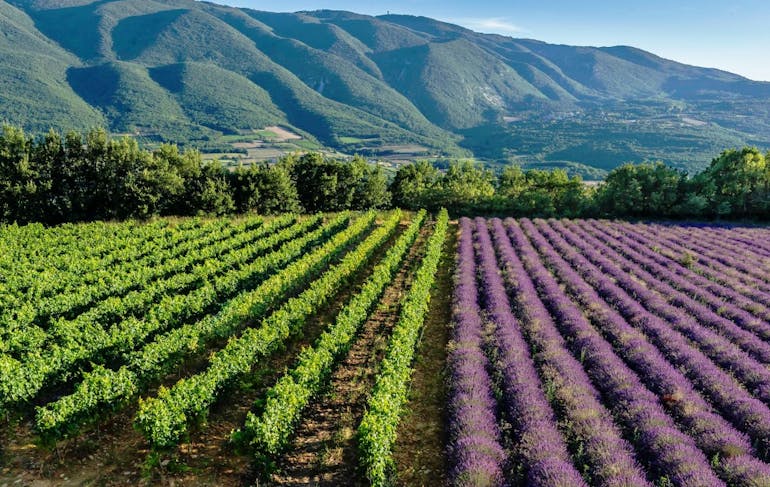
31
Mar
Sustainable Travel Guide: France
This sustainable travel guide will take a closer look at France, one of the world’s most visited countries! This article provides an overview of France’s environment, economic standing, and sociocultural background. We’ve also included suggested “do’s and don’ts” that travelers should keep in mind when sustainably visiting France. Lastly, we will go over some sustainable travel activities, beyond visiting Paris, to help travelers discover all of France’s charm.
Sustainable Travel in France: Key Sustainability Pillars
Environmental
France is one of those lucky countries where you can find a little bit of everything. Whether you are looking for a thrilling alpine adventure, a laid-back countryside escape, or a picturesque beach destination, there is something for everyone.
Mountains
From the Pyrenees in the southwest to the Alps in the east you can find truly jaw-dropping mountainous landscapes. In the winter months, both mountain ranges are popular ski destinations. During snowless seasons, the mountain areas are filled with hikers, climbers, cyclers, and other active travelers. Mont Blanc, in particular, is a site to see as it is the highest mountain in Western Europe! In the Provence-Alpes-Côte d’Azur (PACA) region, you can find another natural wonder, the Gorges du Verdon, Europe’s largest canyon with dramatic limestone cliffs.
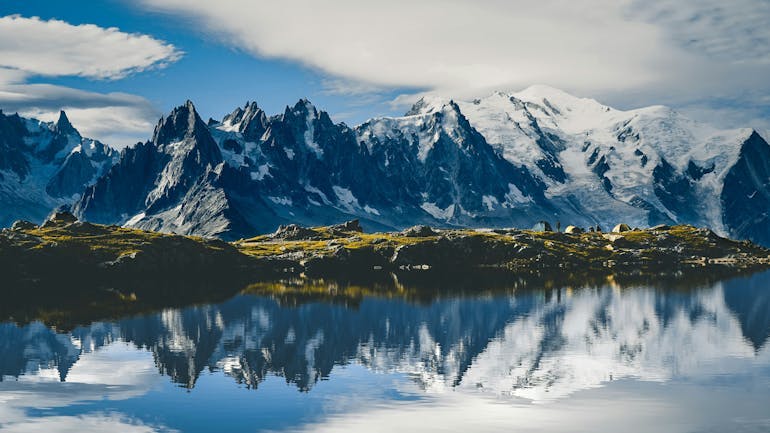
Mont Blanc
Countryside
A majority of France’s land is made up of gently rolling hills and plains, with more than 100 charming medieval villages perched atop some of the steeper hills. Roughly 50% of France’s landmass is agricultural, arable land. Being the largest country in Western Europe coupled with its vast amount of farmland, France has become the agricultural epicenter of Europe. This stunning countryside includes the lavender fields of Provence, the apple orchards of Normandy, and vineyards from Burgundy to Bordeaux to the Loire Valley. Together, this tapestry creates the perfect backdrop to walking and cycling tours throughout the country and lends itself to spectacular regional gastronomy and wine.
Coasts
France is equally known for its picturesque coastal towns. Along the Mediterranean Sea in the south awaits the sparkling Côte d’Azur. To the southwest and west, the Atlantic coast is dotted with oyster farms, salt flats, and dramatic sand dunes. To the north is the English Channel, boasting historical beaches, the iconic Mont St. Michel abbey, and the limestone cliffs of Etretat. Tourists far and wide travel to experience the variety of France’s beaches and nearby sites.
Overall, France is gifted with some of the most beautiful environmental landscapes in Europe. There is so much to see, admire, and protect.
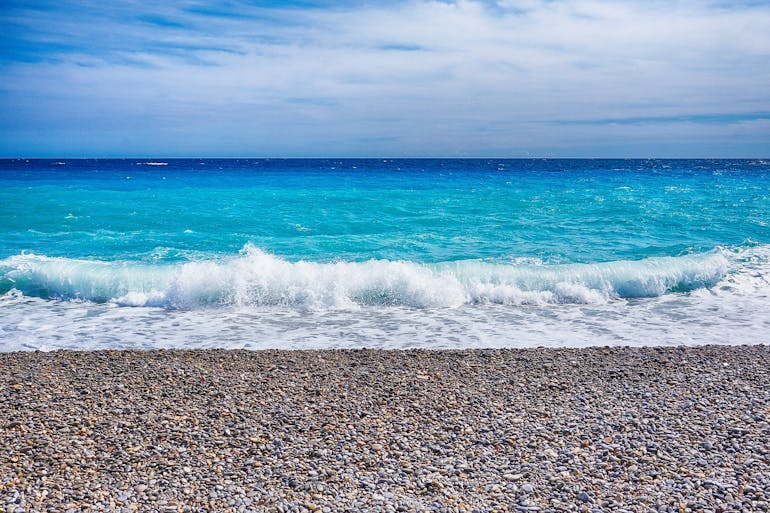
Economic
France is one of the leading countries in the world in the tourism sector. In 2023, Paris alone welcomed 21.6 million tourists, still low compared to pre-Covid times, and France's tourism industry brought in 63 billion euros in international revenue which means France is finally returning to pre-pandemic levels. Leading up to Covid-19, France was welcoming 90 million international tourists annually, accounting for 8% of the country’s GDP!
In general, we recommend that travelers visit more of France than just Paris and try to visit during off-peak times. This can help with tourism dispersal, or spreading out where the flow of tourists and their tourism dollars are going. Visiting other regions and planning a trip outside of high season can help support local economies throughout the country in a significant way. It also helps combat overtourism, which happens when a high influx of visitors overwhelms the capacity and resources of a certain area.
For Paris and many beach towns, try traveling outside of July and August if your schedule allows. For the mountains, try visiting outside of January through March (yes - this means there might not be snow, but there are many other great things you can do!).
The Economic Impact of the Olympic Games on France’s Tourism
France’s tourism figure is expected to increase in 2024 thanks to the upcoming Olympic Games. (So much so, that many Parisian residents are looking to stay away from the city during this period!) Economically speaking, France expects to make a $5-10 billion profit from the Games.
Staying outside of Paris is a great way tourists can help support local economies during this time. You can help by staying in locally owned hotels and visiting local shops and markets. This will not only bring support to businesses outside of Paris but will also help alleviate some of the stress and strain this massive influx of tourists will cause on the city.
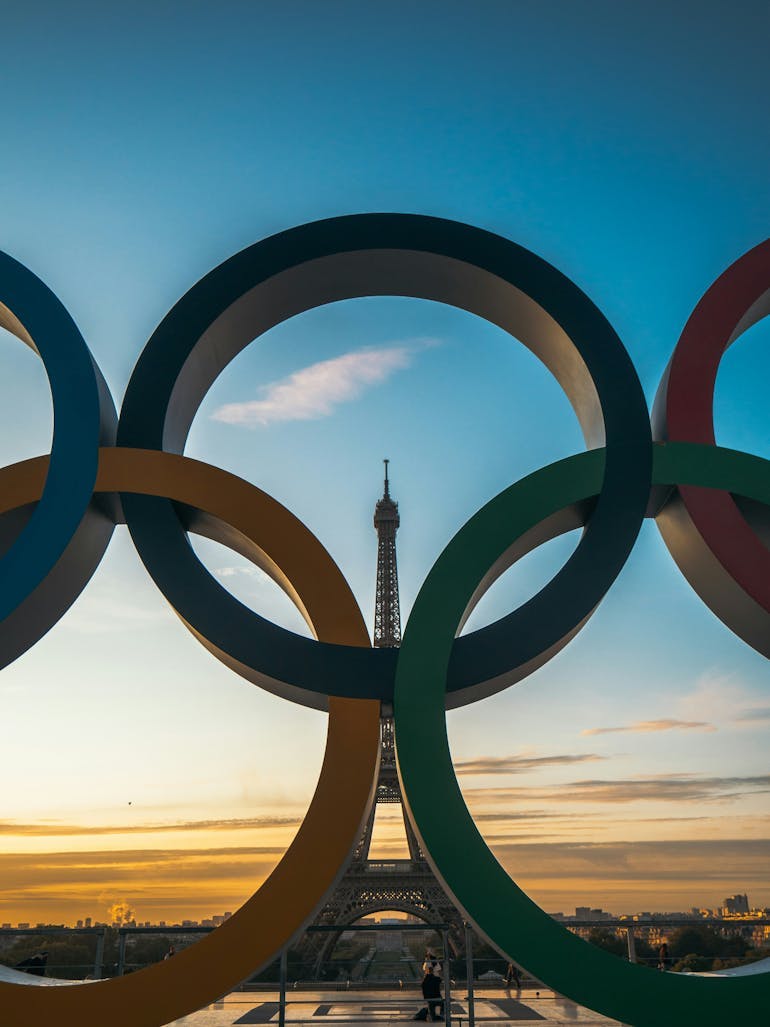
Paris Olympic Games 2024
Sociocultural
France’s culture is world-renowned for mouthwatering delicacies, iconic artworks, and top-tier fashion. But, beyond the surface, the local cultures throughout France’s regions have some important differences. Each region has its own unique history, practices, and traditions.
On a regional level, you may notice a stark difference between cities and rural areas. For example, in the northern regions of France, there is lingering Flemish influence where you will hear and see a different dialect, called Ch’ti. In the eastern French region of Alsace, which shares a border with Germany, the culture, language, and even architecture have a very different feel. The same is true with the Basque Country near the Spanish border and the Alpine regions of France on the border of Switzerland. There are many instances across France where dialects, regional dishes, and cultural practices vary, making every region of France exciting to explore!
Generally, the French value politesse, and proper etiquette is very important to them. There are many social conventions that tourists should respect when visiting such as:
- Keeping your voice down in public
- Saying ‘bonjour’ when you enter a shop
- Making eye contact and doing a “cheers” before taking the first sip of your drink
You can find more dos and don’ts when visiting France below!
Everything Else
Healthcare
The main health preparations travelers need to make before visiting France is to ensure that their routine vaccinations are complete. If you need medical attention while visiting France, you can speak with a pharmacist for less urgent matters or call 112 for emergencies.
Typically, hospitals in France will require a copy of your medical insurance and a deposit. It is advised that tourists look into medical care to cover themselves during their travels.
Safety
Due to threats of terrorism, France is listed on several travel advisories as a level 2 country, meaning that travelers should exercise increased caution. Travelers should keep an ID with them at all times, stay up to date with threat announcements, and remain alert in crowded places.
The other main safety concerns in France are related to petty crime, which typically increases during the summer months when tourism peaks. Pickpocketing and other forms of theft are common, especially on public transport and around tourist attractions.
4 Safety Tips for Protecting Your Valuables in France
- Don’t have your phone out while standing near the metro doors (thieves can grab your phone and hop out of the metro before the doors close).
- Use crossbody bags or shoulder bags that zip shut instead of backpacks.
- Put your bags in front of you when on the metro, don’t leave them behind you.
- Bring a small travel lock to clip your bag to your chair or table (if possible).
5 Safety Tips for Driving in France
- Brush up on French driving rules as they’re a little bit different from US road rules.
- Drive the speed limit (in kilometers!) and know that speed cameras are installed along the highways.
- Don’t leave valuables in your car if you can help it.
- Use secure parking facilities if possible.
- Always lock your vehicle.
Travelers should also be mindful that strikes, protests, and demonstrations are commonplace in France. If you see any of these, steer clear of the area. Although they don’t always cause safety concerns, they can disrupt travel in France. This may result in delayed or canceled trains and other transportation methods.
Additionally, while you don’t need to be scared, we advise avoiding areas near train stations at night, walking with a buddy system, and staying in well-lit areas.
France is considered to be one of the most LGBTQ+ friendly countries in the world. Major cities such as Paris, Nice, and Marseille have very active LGBTQ+ scenes and host many events including Pride parades and film festivals.
Seasonal
As the largest country in Western Europe and with such varied geography, France experiences several climates. The southern coast is typically warmer, the mountainous regions are cooler, and the northern coast is typically more wet. Generally speaking, France has four seasons:
- The winter season runs from December to February and is considered to be less populated by tourists. The Alpine regions are the main exception as the French Alps and Pyrenees are world-renowned ski destinations.
- Spring lasts from March to May and is considered shoulder season. The weather starts to warm, flowers begin to bloom, and life starts to come back to most regions. For more information about visiting France in Spring, check out our Best Sustainable Package Trips in Spring article!
- The summer season from June to August is the peak tourist season. The weather is hot, except for the coastal regions with more temperate climates, making France’s beaches popular escapes. You might also experience a summer thunderstorm or two! Travelers should be aware that during the month of August, and especially in Paris, many businesses will close for the summer holidays.
- Visiting in the fall from September to November is a great choice if you would like to avoid the crowds while still enjoying the pleasant temperatures and weather. September often feels like an extended summer month and it’s not until mid-October that the clouds and drizzle usually return.

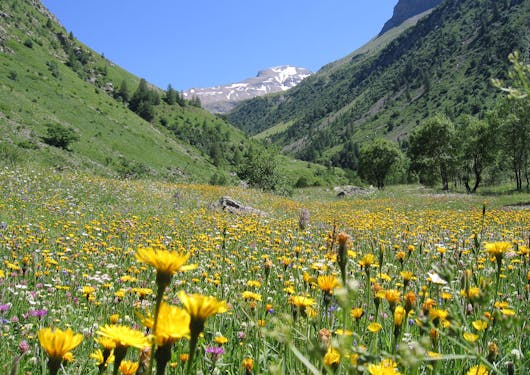
Holidays
France celebrates a variety of Christian holidays - certainly more than Americans do. Travelers should be aware of closures on days such as Easter and Christmas, and check the French holiday calendar before visiting just to be safe.
Children are on school holiday for roughly two weeks in October, December, February, and April. During these times you’ll notice prices will spike as families will often be traveling together.
Special Holidays & Festivals in France
There are many exciting holidays and festivals to experience in France. France celebrates its national day (Fête Nationale), also known as Bastille Day, on July 14th. The Fête Nationale celebrates the storming of the Bastille which is seen as one of the key events in French history that united the people of France. Many businesses will be closed, but you will find fireworks displays, parades, and other fun activities across the country!
Two other festivals are particularly a joy to experience. The Fête de la Musique takes place each year on the Summer Solstice (June 21st) and celebrates with music, music, and more music! The streets around France are filled with musicians, and every open space is turned into a concert hall. Many events, shows, and performances take place all across the country making it a really exciting time to visit!
Last but not least, at the end of February, many French cities will celebrate Carnival or Mardi Gras. The most well-known celebrations are in Nice and Dunnkirk. This colorful celebration lasts for two weeks and you will find people wearing masks, costumes, and extravagant parades. This is a great reason to visit France during its off-peak season!

Bastille Day, July 14th
Sustainable Travel in France: Do’s and Don’ts
What to do in France:
- Greet everyone by saying ‘bonjour’. If you know someone well, they might kiss you on both cheeks - this is called ‘la bise’ (short for ‘bisou’, or ‘kiss’).
- Brush up on some basic French phrases. Even though it is common for most French people to know basic English, a little French goes a long way!
- Ask for the bill (politely). In France, they won’t try to rush people out, which includes not proactively bringing you the bill. You may even have to stand up and go to the front of the restaurant to pay.
- Bring a reusable water bottle and enjoy the many free water fountains around the country.
- Bring a reusable bag to use when visiting local markets, where you can buy fresh, local produce.
- Travel during the off-season and visit places in France outside of the major cities and tourist hubs.
- Stay in locally owned, boutique hotels rather than large hotel chains.
- Use the metro or walk whenever possible.
- Have a low-carbon-impact adventure outdoors and enjoy hiking, walking, biking, and other nature-based excursions.
- Stay on designated trails. This is becoming a problem in France and all travelers should respect the trails.
What NOT to do in France:
- Do not speak loudly in public spaces; it is considered rude.
- Do not expect all businesses to be open all the time (or even for the Google Hours listed to be correct). Businesses will most likely close on Sundays, and many businesses also close at least one other day every week (typically Monday or Tuesday). Most businesses also close mid-day for a 2-hour lunch break. Your experience in France is not complete until you show up somewhere with a handwritten sign indicating an “exceptional closure”.
- Do not travel by plane within France. Instead, rely on the vast train network. Remember that strikes are common so account for some flexibility in your schedule.
- Do not expect to eat dinner before 7 pm. Restaurants usually have their lunch seating from 12-2 pm and dinner seating from 7-10 pm.
- Do not use the casual ‘tu’ form when speaking French, and use the formal ‘vous’ form instead. For example, to say “please”, say “s’il vous plait” instead of saying “s’il te plait”.
- Do not expect to eat a big breakfast. Usually, breakfast is a small meal consisting of a warm drink and a pastry. Lunch and dinner are the larger meals in France.
- Do not worry about tipping; it is not required in France. If you really want to thank your waiter for exceptional service, you can leave a few euros and it will be appreciated.
See our Safety tips above for more tips on do’s and don’ts - especially related to protecting your valuables and driving in France.
7 Sustainable Travel Activities in France
1. Delve into gastronomy and wine
We can’t talk about visiting France without talking about its gastronomy – the intersection of food and culture - and wine!
You really can’t go wrong with any French meal; it is one of the most popular cuisines in the world. Supporting local wineries, trying the myriad regional dishes, and sampling organic produce are great ways to support farms, vineyards, and restaurants during your trip to France.
The first regions that come to mind for wine might be Bordeaux, Champagne, and Burgundy. Yugen Earthside offers several unique trips exploring the food and wine scene in the Alps and Provence. Our guided Gourmet Walking Holiday in the French Alps is perfect for foodies who love hiking in all types of landscapes. Our Hiking in the Wine Trails of Provence is complete with stops in vineyards, stays in picturesque villages, and hikes along the Rhone Valley. You can learn more about both trips here!
2. Visit iconic historic gems
Normandy houses one of France’s most visited tourist attractions - the Mont St. Michel Abbey - yet it is still a very underrated region, especially for lovers of history. As most travelers will rush from Paris to Mont St. Michel as a day trip, this doesn’t leave time to appreciate the rest of this wonderful region’s gems.
From the natural limestone cliffs of Étretat to the historic D-Day beaches, there is so much more to see in Normandy beyond the beautiful Mont St. Michel. Art lovers can peruse Monet’s gardens in Giverny (a day trip away from Paris), history buffs can explore William the Conquers’s story around Bayeux and Caen, and foodies can tour local apple orchards and cider farms. Needless to say, Normandy is perfect for slow travelers who prefer a more mindful, immersive trip.
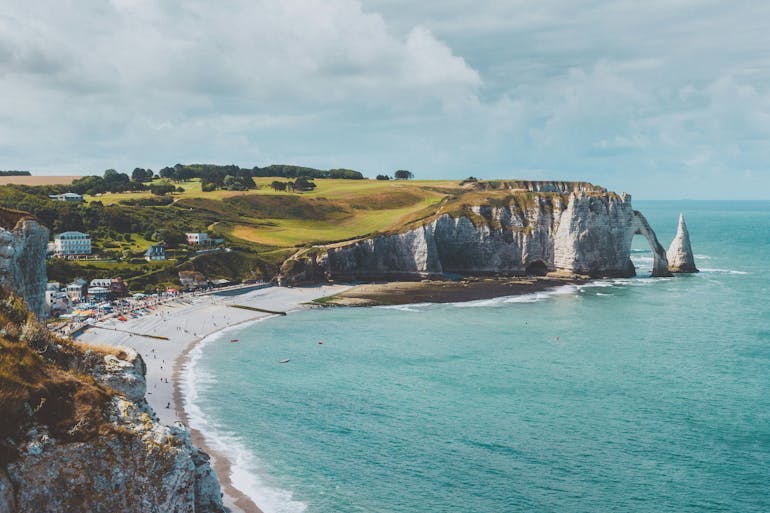
Étretat in Normandy
3. Explore on foot
There are many hikes and trails throughout France that you can explore independently. These are not only low-impact on the environment, but they also allow you to see parts of France that not all people, cars, or trains go to.
The perfect example of this is Corsica, which has one of the most well-known multiday treks in the world; the GR20. On this hike, visitors will be able to cross the island from North to South over a network of trails spanning 200 km. This adventure has excited many thrill seekers over the years and has gained the reputation as being one of the top trails in the world.
Booking a multi-day walking or hiking tour package is a great way to discover the less-touristy side of the French Riviera. You can still be near the beaches while experiencing the charm of the region’s less crowded villages.
Even though the French Riviera is a well-known tourist destination for its beaches, there are other ways to visit while limiting your carbon footprint in these popular areas. For starters, there are many hikes and trails you can explore that are not only low-impact but also allow you to step away from the crowded cities and experience the more charming side of the South of France.
For instance, you can find a great balance of mountain paths and coastal trails in our self-guided Hiking from Hilltop Villages to the French Riviera tour. On this tour, you’ll have the chance to visit some of the iconic destinations in the Riviera such as Menton, Eze, Saint-Jean-Cap-Ferrat, and Villefranche sur Mer while pairing it with local stays, gorgeous views, and hidden gems.
You can have a similar experience exploring another popular region on our sustainable self-guided tour Hiking in the Luberon National Park. Here, you’ll have the chance to see the south of France inset from the famous coastline. You can slow travel through 1000-year-old villages, visit the famed local markets of Provence, and take in the scenic views of the Alps and the Mediterranean Sea from a distance.
4. Explore by bike
There are many ways travelers can explore France with minimal impact on the environment. One of the increasingly popular ways is by bike. Many cycle trails and routes can be found across France, whether you are looking for a leisurely tour or a more adventurous outing! In fact, France now has over 26,000 km of cycle routes and is the second most popular destination for cycle tourism!
One of the most beautiful regions to explore by bike is the Provence-Alpes-Côte d'Azur (PACA). The ViaRhôna is the most well-known route and one that truly cannot be missed. Our E-Bike Guided Cycling Tour allows visitors to explore this route while prioritizing off-the-beaten-path trails. While being guided by a local expert during the day, travelers will also have the evenings to unwind and enjoy the local villages of Gap and Sisteron.
Another region worth mentioning is the Loire Valley. Cycling through the Loire Valley will take you to the charming center of France and around some of the country’s most beautiful chateaux (castles). Following the Loire River, your low-carbon impact tour will also allow you to support local communities as you visit smaller towns and villages.
You can use the France Vélo Tourisme to help select the route that's right for you. Find a complete list of bike routes in France here! You can also refer to the France Government’s Road Safety website for tips on traveling around France by bike.
5. Explore by train
France’s train network has made taking internal flights redundant! Whether you want to castle hop in the Loire Valley or beach hop in the Côte d’Azur - this can all be done by train. France is actively encouraging this switch to train travel by making train journeys more reliable and affordable.
If you need help adapting your itinerary to be flight-free, our affiliate partner Byway offers customizable trip options that rely only on trains, buses, and ferries. Not only that, but they work to prioritize local businesses that both use a sustainable approach but feature off-the-beaten-path destinations. You can learn more about Byway here!

6. Take a ski holiday
France has the largest ski area in the world with over 300 ski resorts across the country! Most tourists will want to visit the French Alps, home to some of Europe’s highest mountains and some of the most iconic ski destinations including Chamonix, Val d'Isere, and Courchevel.
For a less crowded experience, we encourage you to explore the Pyrenees. This mountain range is often overlooked but offers a great variety of skiable terrain at a more affordable price. This is also where you will find many local French people escaping for their ski holiday as the Alps tend to be overrun by tourists.
7. Try a traditional climbing experience
If you’re looking to experience the magic of the French Alps without snow, and are feeling up for an adventure, you should consider a traditional climbing experience known as Via Ferrata (literally, the “Iron Path”). This type of alpine climbing relies on steel infrastructure that is securely integrated into rock faces. This assists climbers through the experience allowing them to rely on ladders, railings, and cables, amongst other things.
Travelers should work with local guides on these experiences for their safety and to protect the natural environment. You should look for companies that keep in mind cliff-nesting birds and other animals. You should also bring a reusable water bottle and make lunches with minimal plastic waste.
France as a Sustainable Destination
France is committed to reducing its carbon footprint. Eight French cities (Lyon, Marseille, Paris, Strasbourg, Toulouse, Nantes, Nice, Bordeaux) are collaborating to “take collective action to make France a destination for responsible tourism and events,” as reported by Forbes. Paris aims to be Europe’s greenest city by 2030.
With tourism integral to France’s identity, more and more actions have been implemented to help make France a sustainable destination for tourists.
- France is becoming one of the leading destinations in cycle tourism and other forms of slow travel.
- Initiatives such as “Flocon Vert” have been put in place to protect mountain tourist destinations. The Flocon Vert label is given to mountain resorts who meet specific sustainable criteria such as using renewable energy sources.
- France recently banned short-haul domestic flights to encourage train travel.
Paris, the most visited city in the world, continues to climb in the GDX ranking system for analyzing and improving the sustainability performance of destinations. Initiatives include:
- Having fresh water fountains across the city to refill reusable water bottles.
- Expanding its cycle network.
- Banning diesel cars, having city-wide car-free days, and having some neighborhoods go completely car-free permanently.
- Targeting mostly electric and biomethane buses by 2025.
All in all, France is a destination that is proactively responding to its popularity by encouraging tourists to take more sustainable actions. Tourists can do their part by leveraging the sustainable infrastructure France is working to build, opting for low-carbon impact travel methods and experiences, exploring less-visited regions, visiting France off-peak season, and minimizing their waste when they travel.
This post may contain affiliate links. This means we may earn a small commission if you purchase a product from our link, at no additional cost to you.
